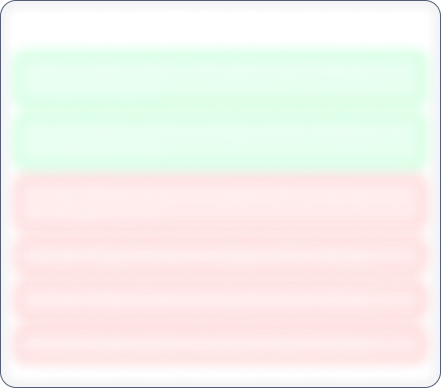Festive Sale – 50% Off!
Bharat Gears

No Data Available
Investor Sentiment
Bharat Gears Share price and Fundamental Analysis
Key Metrics
Stock Returns
Stock Heatmap

No Stocks
Smart Score

Unlock Smart Score
See Detailed Analysis & Insights


Unlock Insights
See Detailed Analysis & Insights
Technicals
Returns Calculator
If you would have investedResearch Report
No Research Report
Corporate Action
Financials
Key Ratios
ROE
Avg ROE (3 Yrs) : NaN%
ROCE
Avg ROCE (3 Yrs) : NaN%
ROA
Avg ROA (3 Yrs) : NaN%
NPM
Avg NPM (3 Yrs) : NaN%
Dividend History
5 Year FactSheet
Documents

No Data Available
News
Bharat Gears Management and History
Company Management


Unlock Management Data
See Detailed Analysis & Insights
Company History
Bharat Gears Ltd(BGL), promoted by Bharat Steel Tubes and Raunaq & Company in collaboration with ZF Friedrichshafen, Germany, was incorporated in 1971 to manufacture automotive gears. The foreign collaborator holds 25.99 % stake in the company.
BGL is a major global supplier of automotive gears and heat treatment furnaces. The Company manufactures wide range of Ring Gears and Pinions, Transmission Gears and Shafts, Differential Gears, Gear Boxes and Heat Treatment Furnaces; primarily catering to commercial vehicle, agricultural machinery and construction equipment segments. The Company's manufacturing facilities located at Mumbra near Mumbai, Faridabad near New Delhi and Lonand near Pune. The Company is also engaged in after-market distribution. There delivery expands to nations across Europe, the USA, Mexico, Brazil, and Asia.
BGL has two division i.e Automotive gears division and Industrial Furnaces division with the former contributing around 92% of the turnover and the later the balance.
The automotive gears division manufactures a wide range of gears - hypoid, spiral gears and differential gears, which go into axle assemblies and parallel axes gears and shafts, which make up the gear box assemblies. This division supplies to OEMS in tractors, trucks & Bus and Utility vehicle industries. The company also serves the replacement market and exports to overseas market.
BGL's two gear manufacturing units were located at Mumbra(Thane Dt), Maharashtra and Faridabad, Haryana. The Faridabad unite commenced commercial operation on May 1, 2000. BGL entered into an collaboration with Holcroft, US, for specialised heat-treatment furnaces.
In May 2012 the Company opened work on constructing its third plant at Lonand in Satara district of Maharashtra. The Commercial operations/production at this plant of the Company was started in March, 2014.
In 2022-23, the Company implemented multimachine layouts in the gear-cutting section and the grinding section. In the Mumbra Plant, cycle time was reduced on hobbing machines by increasing hob RPM and in spline shaping operations by changing cutting parameters. In the Bevel segment, the face grinding operation was removed for selected pinion parts. HT loading quantity was enhanced by introducing a new grid for selected parts. Loading quantity per tray is increased by loading an extra grid.
In Lonand Plant, productivity improvement was achieved by adopting cluster cycles, reducing hobbing stock, and using carbide fixtures, resulting in better throughput in finishing operation. Gear grinding fixtures were replaced with collate type or hydraulic fixtures to achieve higher cutting speed and feed. The gear grinding capacity further boosted by increasing cutting velocity. A hydraulic-operated de-burring system was installed on shaping machines. This resulted in the elimination of manual deburring operations after shaping and improving throughput and reduced handling, manpower, and rejection. Further, a rack system was introduced in Finish Goods store for effective use of vertical space in 2023.
I n Faridabad Plant, the Company eliminated pinion top face grinding process. Tooling coating modified which improved productivity in cutting and parts shifted from manual loading to autoloading. Further, set-up time in the hobbing process was reduced by introducing multi-gear cutting (twin hobs) in 2023.
Bharat Gears Share Price
Bharat Gears share price reflects investor sentiment toward the company and is impacted by various factors such as financial performance, market trends, and economic conditions. Share price is an indicator which shows the current value of the company's shares at which buyers or sellers can transact.
Bharat Gears Market Cap
Market capitalization of Bharat Gears indicates the total value of its outstanding shares. Marketcap is calculated by multiplying share price and outstanding shares of the company. It is a helpful metric for assessing the company's size and market Valuation. It also helps investors understand how Bharat Gears is valued compared to its competitors.
Bharat Gears PE Ratio
Bharat Gears PE ratio helps investors understand what is the market value of each stock compared to Bharat Gears 's earnings. A PE ratio higher than the average industry PE could indicate an overvaluation of the stock, whereas a lower PE compared to the average industry PE could indicate an undervaluation.
Bharat Gears PEG Ratio
The PEG ratio of Bharat Gears evaluates its PE ratio in relation to its growth rate. A PEG ratio of 1 indicates a fair value, a PEG ratio of less than 1 indicates undervaluation, and a PEG ratio of more than 1 indicates overvaluation.
Bharat Gears ROE (Return on Equity)
Return on Equity (ROE) measures how effectively Bharat Gears generates profit from shareholders' equity. A higher ROE of more than 20% indicates better financial performance in terms of profitability.
Bharat Gears ROCE (Return on Capital Employed)
Return on Capital Employed (ROCE) evaluates the profitability of Bharat Gears in relation to its capital employed. In simple terms, ROCE provides insight to investors as to how well the company is utilizing the capital deployed. A high ROCE of more than 20% shows that the business is making profitable use of its capital.
Bharat Gears Total Debt
Total debt of Bharat Gears shows how much the company owes to either banks or individual creditors. In simple terms, this is the amount the company has to repay. Total debt can be a very useful metric to show the financial health of the company. Total debt more than equity is considered to be a bad sign.
Bharat Gears Debt to Equity Ratio
The Debt-to-Equity (DE) ratio of Bharat Gears compares its total debt to shareholders' equity. A higher Debt to Equity ratio could indicate higher financial risk, while a lower ratio suggests that the company is managing its debt efficiently.
Bharat Gears CAGR (Compound Annual Growth Rate)
CAGR shows the consistent growth rate of Bharat Gears over a specific period, whether it is over a month, a year, or 10 years. It is a key metric to evaluate the company’s long-term growth potential. Main metrics for which CAGR is calculated are net sales, net profit, operating profit, and stock returns.
Bharat Gears Technical Analysis
Technical analysis of Bharat Gears helps investors get an insight into when they can enter or exit the stock. Key components of Bharat Gears Technical Analysis include:
Support Levels (S1, S2, S3)
There are usually multiple support levels, but the main support levels for a stock are S1, S2, S3. Support levels indicate price points where stock might get support from buyers, helping the stock stop falling and rise.
Resistance Levels (R1, R2, R3)
There are usually multiple resistance levels, but the main resistance levels for a stock are R1, R2, R3. Resistance levels represent price points where Bharat Gears shares often struggle to rise above due to selling pressure.
Bharat Gears Dividends
Dividends refer to the portion of the company’s profits distributed to its shareholders. Dividends are typically paid out in cash and reflect Bharat Gears ’s financial health and profitability.
Bharat Gears Bonus Shares
Bonus shares are usually given by companies to make the stock more affordable, increase liquidity, boost investor confidence, and more.
Bharat Gears Stock Split
Stock split increases the number of its outstanding shares by dividing each existing share into multiple shares. When the company offers a stock split, the face value of the stock reduces in the same proportion as the split ratio.
Bharat Gears Financials
The financials of Bharat Gears provide a complete view to investors about its net sales, net profit, operating profits, expenses, and overall financial health. Investors can analyze financial data to assess the company’s stability and also understand how the company has been growing financially.
Bharat Gears Profit and Loss Statements
The profit and loss statement of Bharat Gears highlights its net sales, net profit, total expenditure, and operating profits in the current financial year. This Profit and Loss statement is crucial for evaluating the profitability and financial stability of Bharat Gears .
Bharat Gears Balance Sheet
The balance sheet presents a snapshot of Bharat Gears ’s assets, liabilities, and equity of shareholders, providing insights into the financials of the company.
Bharat Gears Cashflow Statements
Cashflow statements track the company's cash inflows and outflows over a period. It is an essential tool for understanding how well the company manages its liquidity and finances.


